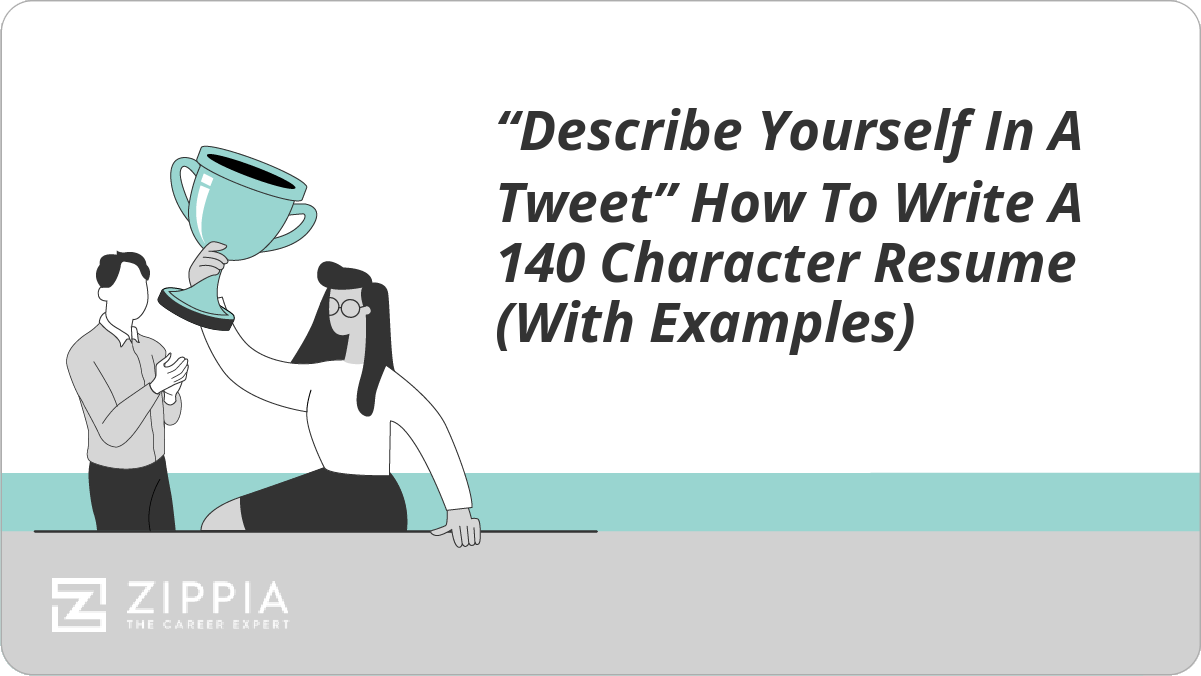- Application
- Email Communication
- Letter Communication
- Follow Up
- Job Application Tips
- About Me Page
- Answering Machine Messages
- What To Bring To A Job Fair
- Free Job Posting Sites
- Email Sign Offs
- Job Scams
- How Long Does It Take To Become A Doctor
- How Long Does It Take To Become A Vet
- Government Programs That Help Felons Get Jobs
- How Long Does It Take To Become A Dentist
- Relocation
- Job Search Spreadsheet
- Right To Work States
- How To Research A Company
- How To Change Careers
- What To Do If You Have No References
- Working For a Big Company Vs. A Small Company
- Writing Sample Format
- How Long Should A Writing Sample Be
- How To Get A Job Fast
- How Many Jobs Should I Apply For
- Military Requirements
Find a Job You Really Want In
You’ve written a letter or email and you’re pretty proud of it. Your word choice, structure, and anecdotes work together to create a masterpiece that you’d be proud to send to any CEO.
Even so, all your hard work can be ruined if you misfire with the first words in your message: your greeting or salutation.
It may sound extreme, but the opening line of your email or letter, the part where you were taught in elementary school to say, “Dear Doug,” is vital to creating a positive first impression.
In this article, you’ll learn how to choose the correct salutation for any professional correspondence you may have.
What Are Salutations?
In general terms, salutations refer to words or gestures used to acknowledge a person’s arrival or departure. However, with regards to letter-writing, salutations refer specifically to the opening words of greeting.
While the best greetings will include the recipient’s name, the choice of words that precedes their name plays an important role in setting the tone of the email. And when email conversations go on, maintaining and tweaking that tone is just as essential.
How to Choose Salutations
Good written communication is about making sure your message gets across clearly, and you can’t do this if you leave room for your recipient to misinterpret something you wrote.
You can’t avoid all misunderstandings, but there are ways to cut down on the opportunities for them to happen. Choosing the right salutation is one of these ways, especially since it’s the first thing that your reader will see. As a result, it’s important to choose a greeting that will be appropriate to the recipient, even if you would want to be addressed differently.
Several considerations play into finding the appropriate greeting:
-
How well you know the recipient. Generally speaking, the better you know a person, the more casual you can be in your greeting and the rest of your message. This might even change from coworker to coworker, depending on your relationship with them.
-
If you’re sending an email or hard copy letter. While emails can be formal, they’re typically less formal than a written or printed letter. You can use any greeting that’s appropriate for a hard copy letter in an email, but you can’t always put an email-appropriate greeting in a letter.
-
The purpose of your letter. Your salutation should be appropriate to the rest of your message as well. If you’re writing to schedule a meeting with a colleague, you can be a bit more casual than you would be in a cover letter.
-
How much interaction you’ve had in the past. If this is the first time you’ve reached out to the person you’re writing, you should be more formal than you would be in your tenth email with them.
Or, if you’ve had a previous conversation with them either in person or on the phone, you can usually choose a more informal greeting than you would if your letter was the first interaction you’d had with them.
-
How they address you. If the person you’re writing to has written to you before, you can simply match the level of formality of their greeting or, depending on their status relative to you, go a touch more formal in your own.
Formal Salutations
These formal salutations are generally acceptable in both letters and emails where you’re wanting to sound especially professional or don’t know the recipient very well.
-
Dear. Probably the most common greeting, “Dear” is an excellent choice for both emails and written letters. Whether you’re writing a cover letter, a resignation letter, or an email to a coworker, as long as you know the recipient’s name, this is a safe neutral.
-
Greetings. This is a good option when you have met the person you’re writing to but don’t know them well or when you don’t know the recipient’s name. It’s a slightly more formal greeting than “hi” or “hello,” making it versatile for both written letters and emails.
-
Good afternoon/evening/morning. These salutations are similar to “Greetings” in formality, but they’re best used for email messages since you can’t guarantee when someone will receive a physical letter or know when you sent it. This is also a good option when you’re emailing a colleague and want to sound friendly yet professional.
-
To whom it may concern. There is a lot of controversy surrounding this greeting, but it’s still useful when you truly cannot find the name of the person you’re addressing. This is especially helpful when you’re writing a cover letter or letter of recommendation, and you have no idea who your letter will be going to but still need to be very professional.
Informal Salutations
While the formal salutations are interchangeable between written letters and emails, for the most part, you should use these informal greetings only in casual email conversations with someone you’ve already established a professional relationship with.
-
Hello. This is the most formal of the informal salutations and can be used with or without a name. It’s also a great option if you’re emailing a group of people and either don’t know their names or can’t reasonably fit them all into the salutation.
-
Hi. A step more casual than “Hello,” “Hi” is best used only with people you know well and have talked to before. It’s best when coupled with a name, but it can be used without one too.
-
Hey. The most informal salutation, you should only use “Hey” to address colleagues you have a strong relationship with. It tends to sound more like a text message than a professional email, so make sure you use this option carefully.
-
No salutation, just a name. Starting a message with just the recipient’s name is efficient. Still, you should use it sparingly since it can sound abrupt or even harsh, especially if you’re trying to establish a relationship over email. It can be useful during longer casual email conversations where the tone has already been established, though.
Other Salutations for Business Correspondence
Depending on why you’re writing a letter, your choice of salutation varies:
-
No contact information. For starters, it’s always best to know exactly who you’re addressing your letter to. It’s important for determining other elements of your letter’s contents. But if you don’t have the recipient’s contact information, you have a few options that can work:
-
To Whom It May Concern. We covered this one above, and it works if you’re writing a document that’ll be used en masse by someone else, like a recommendation letter. Or if you’re writing to complain about an issue or request help but don’t know who exactly will be on the receiving end.
-
Hello/Greetings. If your letter isn’t all that formal, starting out wtih a standard greeting like “Hello” without using a name is perfectly acceptable.
-
Dear Sir or Madam. This one gets used sometimes, so we thought we’d mention it. That being said, it’s pretty outdated, so we don’t really recommend using it.
-
-
Cover letter. If you don’t know who to address your cover letter to, keep trying to figure it out. Look for the hiring manager’s name on the company website, on LinkedIn, in the job description, or by calling the company directly and asking. Then, simply address your cover letter to “Dear Mr./Ms. [Last Name].”
If all that fails, steer clear of generic greetings like “To Whom It May Concern” or “Dear Sir or Madam” — the recipient will assume you didn’t try very hard or that you’re sending out the same cover letter to every company (which is not what you want).
Instead, go for a salutation like:
-
Dear Hiring Team
-
Dear [Department Name] Team
-
Dear [Title of person you’d report to]
-
-
Multiple people. When addressing multiple people in one email, it’s best to use all of their names after your salutation, separated by commas. Whether you use titles and/or first and last names is up to you, but stay consistent. For example, go with “Dear Tim, Mark, Alice,” not “Dear Tim Howard, Mark, and Ms. Jones.”
How to Follow a Salutation
Once you choose the most appropriate salutation, it’s time to decide what should follow it.
Generally, this will be the recipient’s name, but even that brings options with it. No matter what you choose, always double and triple-check that you spelled the name correctly.
-
First name. A good rule of thumb is to use just the person’s first name only when you’re already on a first-name basis with them outside of your correspondence. This is most commonly used in emails rather than in written letters.
-
Last name. Saying “Dear Ms. Haywood” or “Dear Dr. Jacobs” is a classic, safe option, especially when you’re addressing a potential future employer or client and need to be more formal. Make sure you use the proper honorific designation as well.
-
Use “Ms.” for females. Technically, “Mrs.” is appropriate for married women and “Miss” for single women, but unless you know for sure, “Ms.” is generally the advisable choice to avoid offending anyone.
-
Use “Mr.” for males. There isn’t really another option for men, so this is generally a safe choice.
-
Use other titles when applicable. If you know the person has a doctorate education of some kind, use “Dr.” instead of “Ms.” or “Mr.” The same goes for those with military ranks as well. If you aren’t sure about this for the person you’re addressing, though, just stick to the classic “Ms.” and “Mr.”
-
-
Full name. If you aren’t on a first-name basis with the person you’re addressing and don’t know their gender, simply use both their first and last names. For example: “Dear Jordan Parker.”
-
Generic options. Sometimes you may find yourself addressing your letter to a group of people or an unknown recipient. In this case, there are some more generic options to use.
If you’re writing to a group of people, you can use “Hello, team,” or “Hi, all.” If there are only three people in the group, though, try to address all of them by saying, “Hi Steve, Mike, and Taylor.”
When you don’t know who you’re addressing, you can use the person’s title if you have it or simply stick with “Dear Sir or Madam.” This is a good option for highly formal letters that are your first interaction with the person.
Punctuating Salutations
There are two ways to punctuate your salutation: a comma or a colon. Both are acceptable in professional writing, but a colon is the most formal. Generally, you’ll also want to leave a blank line between your salutation and the first line of text.
Here are a few examples of this:
Dear Mr. Wilson:
I’m writing to recommend Wendy Peterson for the position of Junior Accountant.
Hi, Jason,
I hope your week is going well. I wanted to follow up with you on our conversation from earlier.
When to Switch to Less Formal Greetings
Just because you choose one salutation to begin a conversation doesn’t mean you have to stick with it for the rest of the interaction. The more you talk with someone, even if it’s over email, the less formal you need to be. This may look different depending on the conversation topic, though, and remember that a lack of formality isn’t the same thing as a lack of professionalism.
For example, you might begin an email conversation with a potential employer with the salutation, “Dear Ms. Caseman,” and then you might move to just “Ms. Caseman” or “Good morning” in your second and third email responses.
If you’re talking with a peer about a project you’re both working on, you might start with “Hello, Bill” and then move to “Hi again, Bill.”
These more extended exchanges are also good opportunities to use the recipient’s response to gauge their communication style and how casual or formal they like to be. Then you can adjust your salutations accordingly.
- Application
- Email Communication
- Letter Communication
- Follow Up
- Job Application Tips
- About Me Page
- Answering Machine Messages
- What To Bring To A Job Fair
- Free Job Posting Sites
- Email Sign Offs
- Job Scams
- How Long Does It Take To Become A Doctor
- How Long Does It Take To Become A Vet
- Government Programs That Help Felons Get Jobs
- How Long Does It Take To Become A Dentist
- Relocation
- Job Search Spreadsheet
- Right To Work States
- How To Research A Company
- How To Change Careers
- What To Do If You Have No References
- Working For a Big Company Vs. A Small Company
- Writing Sample Format
- How Long Should A Writing Sample Be
- How To Get A Job Fast
- How Many Jobs Should I Apply For
- Military Requirements





